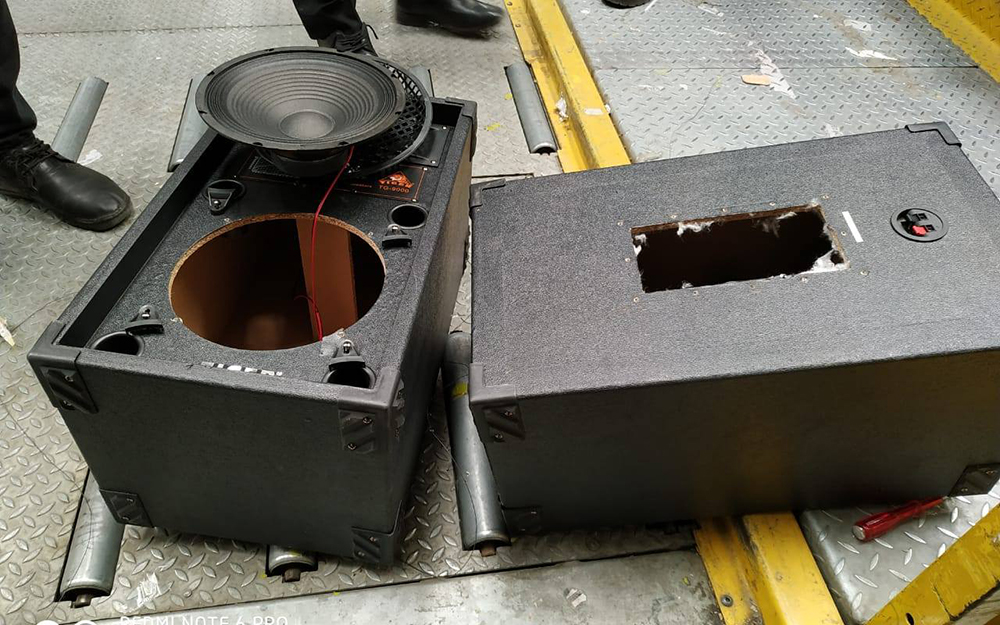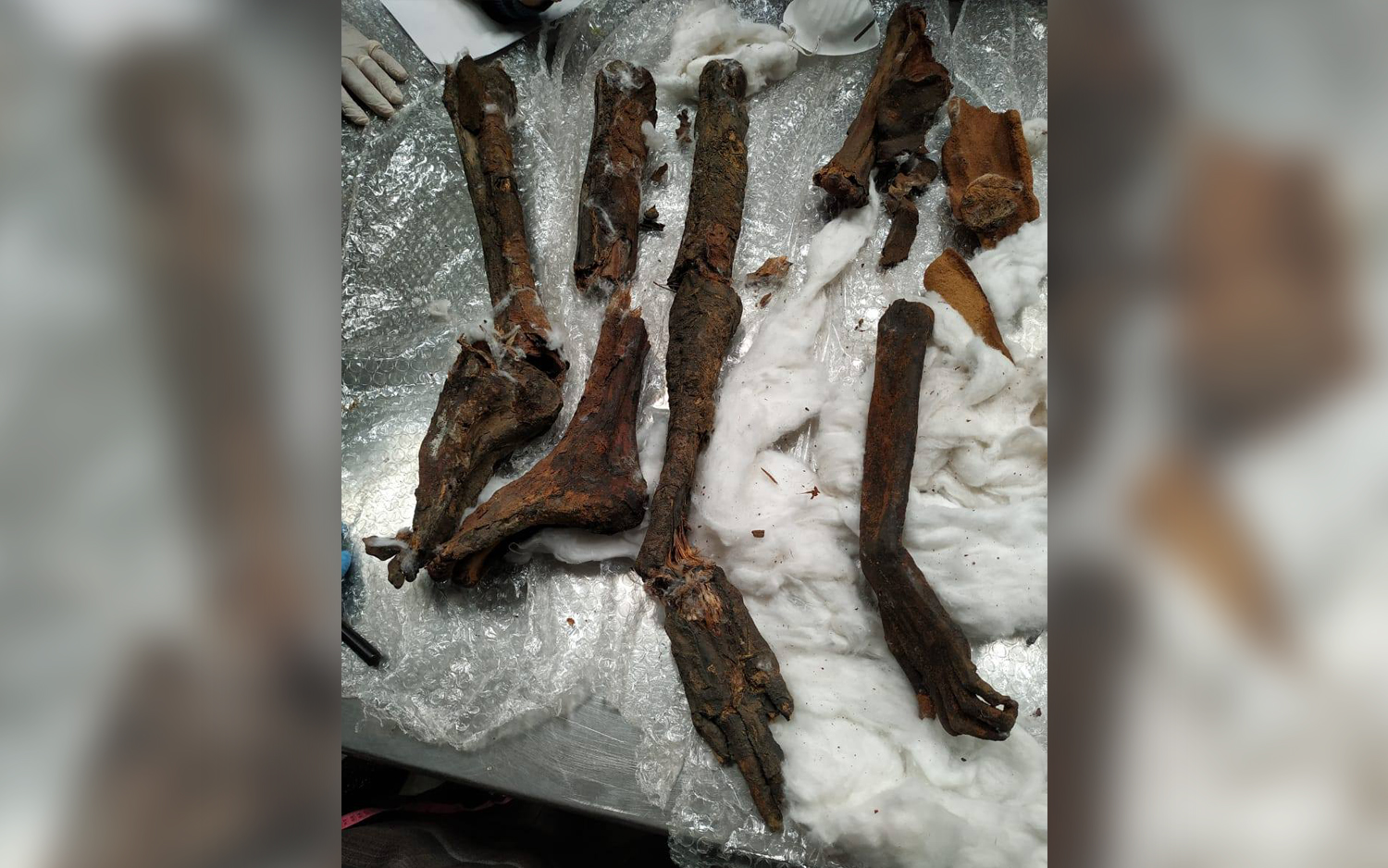Stolen Mummy Feet, Arms and More Found Stashed in Speakers at Cairo Airport

An attempt to illegally transport Egyptian mummy parts was recently thwarted at Cairo International Airport.
Airport X-ray scanners detected mummy remains concealed in a package headed for Belgium, Egypt's Ministry of Antiquities reported yesterday (Feb. 24) on Facebook.
The recovered remains — a torso portion, an arm, part of a left hand, two legs and two feet — came from two mummies and were concealed inside a pair of stereo speakers, according to the ministry. [Reclaimed History: 9 Repatriated Egyptian Antiquities]
After airport officials discovered and confiscated the hidden body parts, archaeologists examined the remains and confirmed that they came from ancient mummies. The mummy parts were then brought to the Museum of Antiquities in Cairo for restoration, the ministry reported.
All antiquities that originate in Egypt are considered to be the property of the state, according to the Egyptian Law on the Protection of Antiquities, enacted in 1983. With some exceptions, the law prohibits private ownership of objects that have historical or archaeological value — including human and animal remains.

Trade in Egyptian antiquities is strictly forbidden, and the removal of objects from the country without the express permission of antiquities authorities carries a fine and a prison sentence of up to two years. To enforce this law, a special archaeological unit — the team that identified the recently-discovered mummy parts — operates at the Cairo airport, the ministry reported.
Despite these precautions, trafficking in stolen artifacts persists. In 2016, objects worth an estimated $50 million were illegally shipped from Egypt to the U.S. This represents the highest annual value of trafficked Egyptian artifacts in 20 years, Live Science previously reported.
Sign up for the Live Science daily newsletter now
Get the world’s most fascinating discoveries delivered straight to your inbox.
In fact, looting of archaeological sites in Egypt has escalated dramatically since 2011, when political upheaval and economic instability rocked the country, experts reported in 2016 in the journal Antiquity.
Examination of satellite imagery of more than 1,000 sites across Egypt dating from 2002 to 2013 showed that looting affected many locations. Researchers found that incidents of looting doubled between 2009 and 2010, the years leading up to the 2011 unrest, and then doubled yet again between 2011 and 2013, according to the 2016 Antiquity study.
- Photos: The Amazing Mummies of Peru and Egypt
- Image Gallery: The Faces of Egyptian Mummies Revealed
- Purrfect Photos: Cat Mummies and Wooden Cat Statues Discovered at Ancient Egyptian Burial Complex
Originally published on Live Science.

Mindy Weisberger is an editor at Scholastic and a former Live Science channel editor and senior writer. She has reported on general science, covering climate change, paleontology, biology and space. Mindy studied film at Columbia University; prior to Live Science she produced, wrote and directed media for the American Museum of Natural History in New York City. Her videos about dinosaurs, astrophysics, biodiversity and evolution appear in museums and science centers worldwide, earning awards such as the CINE Golden Eagle and the Communicator Award of Excellence. Her writing has also appeared in Scientific American, The Washington Post and How It Works Magazine. Her book "Rise of the Zombie Bugs: The Surprising Science of Parasitic Mind Control" will be published in spring 2025 by Johns Hopkins University Press.










